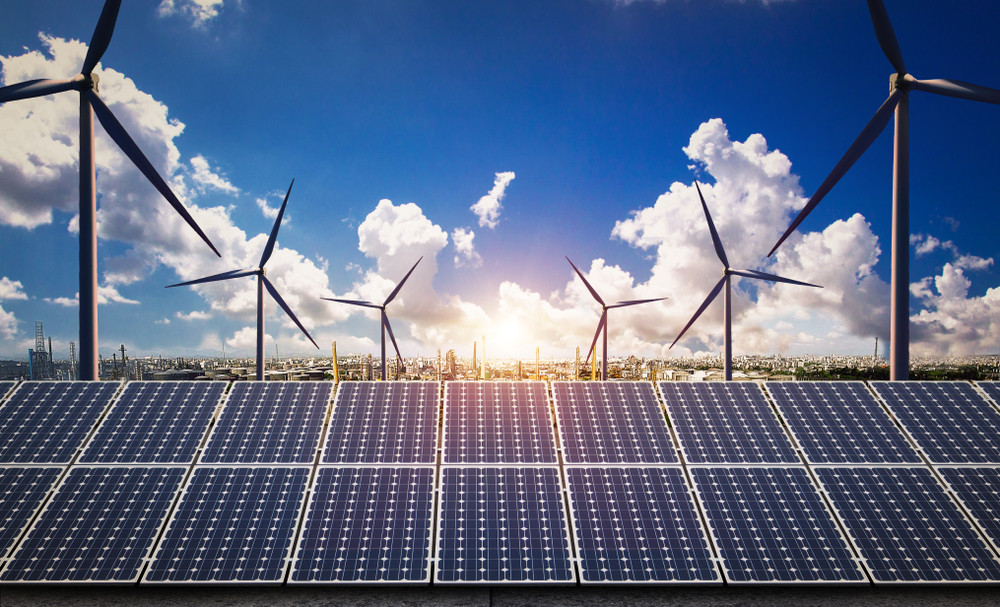Electricity emissions worldwide fell to a record low in 2022 due to the increasing use of wind and solar energy, which jumped to a record 12% of global power generation last year from 10% in 2021, according to a report released Wednesday.
The carbon intensity of global power generation dropped to 436 grams of carbon dioxide equivalent per kilowatt-hour (gCO2/kWh) last year, climate and energy independent think tank Ember said in a report using data from 78 countries, adding that it was “the cleanest-ever electricity” it recorded.
The report indicated that all clean energy sources, renewables and nuclear, represented a 39% share of global generation last year, with solar’s share rising by 24% and wind generation by 17% compared to the previous year.
According to Ember, more than 60 countries are now generating over 10% of their electricity from wind and solar. However, other sources of clean electricity fell for the first time since 2011 due to a decline in nuclear output and fewer new nuclear and hydro plants coming online.
Coal generation went up by 1.1% in 2022 despite the coal power phasedown agreed upon at the COP26 UN climate conference in 2021. Power sector emissions saw a 1.3% increase in 2022 to reach an all-time high. A 0.2% decline was recorded in gas power generation, the second time in three years, in the wake of high gas prices globally.
Last year also witnessed the lowest number of coal plant closures in seven years, as countries look to maintain back-up capacity, even as the transition picks up speed.
Demand for electricity worldwide grew by 2.5% in 2022, driven by demand increases in major economies, three of which—China (54%), the US (21%), and India (18%)—accounted for 93% of the overall global demand growth, Ember’s data showed.
In contrast, the European Union’s (EU) electricity demand dropped by 3% due to a combination of mild weather and efforts to reduce consumption in the face of affordability pressures and supply security concerns.
During the COP26 climate talks in Glasgow, UK, over 40 countries committed to shift away from coal and made pledges during the summit. Interestingly, some big coal-dependent countries, including China and the US, did not sign up.
Other countries are looking into clean coal technologies like carbon capture and storage (CCS) and other advanced technologies that could lower a coal plant’s carbon emissions. However, according to a Global Energy Monitor (GEM) report released in April last year, this will just delay a coal phase-out as they are extremely expensive.
Although CCS may be an important technology to address climate change in certain sectors, it has only played a very limited role in lowering emissions from coal plants due to its high costs, the report noted.
Instead of moving away from these coal plant technologies, countries like the US and Japan and several businesses across the globe doubled down on them in 2021 and continued to pin their hopes on the development and scale-up of CCS to reduce coal emissions.
In February last year, it was revealed that several commercial banks across the globe channeled more than $1.5 trillion to the coal industry between January 2019 and November 2021, while institutional investors poured more than $1.2 trillion in the sector in the same period despite calls to end global fossil-fuel use, according to the Global Coal Exit List (GCEL) compiled by campaign groups Urgewald, Reclaim Finance, 350.org Japan, and 25 other NGOs.











